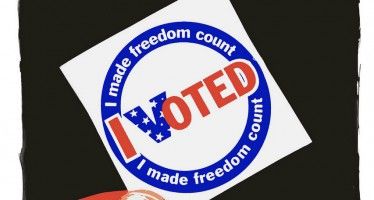Gerrymandering Muted CA Tea Party
NOV. 4, 2010
By WAYNE LUSVARDI
The Tea Party movement couldn’t overcome the mathematics of political gerrymandering on Election Day Nov. 2 in California. All that the some 240 groups of the Tea Party movement in California had to show were possibly two pickups of congressional seats out of 53 seats in play, if slim winning vote margins hold up:
- In Congressional District 11, a swing district in the East Bay of Northern California where Tea Party favorite David Harmer is holding on to a narrow lead with 82 percent of the precincts reporting.
- In Congressional District 20 in Fresno and Kern Counties Andy Vidak, a Tea Party endorsed candidate, was also holding on to a slim lead with 76 percent of the precincts reporting. But Vidak’s lead may not be due to the Tea Party but due to the influence of California’s recent court-ordered drought that left farmland fallowed and parched and voters angry at Democrat incumbent Jim Costa.
All the other congressional seats won by Republicans or Democrats were of incumbents not necessarily run or endorsed by the Tea Party in safe gerrymandered districts.
In District 29, Democrat incumbent Adam Schiff beat Tea Party backed Republican John Colbert 65 percent to 31percent in a heavily gerrymandered district in Los Angeles County encompassing parts of Glendale, Burbank, Pasadena and Alhambra. Large holes in the middle of District 29 are not even within the political district’s boundaries.
In non-gerrymandered statewide elections, Democrats picked up the governorship and lieutenant governor seats and held onto the secretary of state, controller, treasurer and insurance commissioner seats. Steve Cooley, an establishment Republican not out of the Tea Party mold, was holding on to a slim lead for attorney general with two-thirds of the voting precincts reporting.
The Tea Party movement was not running candidates in local city, county or school district elections but may do so in the future.
Despite adding energy to Republican candidates and fiscally conservative positions concerning ballot propositions, the bad news for the Tea Party was that it was mostly unable to surpass the rigged game of gerrymandering which robs votes from the minority party. The majority Democratic Party, the party of taxation, before the passage of Prop. 20, held a typical two-to-one advantage in registered voters in gerrymandered districts in California.
Up until Nov. 2, taxpayers had the ultimate antidote to gerrymandering – the two-thirds vote requirement for passing state budgets, which essentially gave two votes to every anti-tax voter. Before the passage of Prop. 25, essentially the Party of Taxpayers and the Party of Tax Pushers were at mathematical parity or equality.
But with the passage of Prop. 25 Tuesday night, the voting threshold may be lowered from 66 percent to 50 percent plus one for budget passage and for certain types of tax increases, depending on various legal interpretations of the proposition. The combined effect of gerrymandering and lowering the vote threshold will in effect give Democrats a compound three-to-one advantage unless the provisions of Prop. 20 can be implemented quickly and fairly before the next elections. With the current combined effect of gerrymandering and lowering the vote threshold for taxes under Prop. 25, tax pushers have a near-lock on new taxes.
In effect, what Propositions 20 and 25 have done is theoretically roughly reverse the previous advantageous mathematical positions of the Democratic and Republican Parties when it came to tax measures. Hypothetically, with Prop. 20 Republicans may eventually be able to level the playing field when it comes to gerrymandering, but with Prop. 25 Democrats would be able to level voting thresholds.
With the passage of Prop. 25, California is for the moment under one-party rule — not a healthy situation for a democracy.
Related Articles
CA Dems move to remake state voting
Pursuing a long-held dream of maximizing voter turnout, California Democrats have coalesced around legislation that would fundamentally transform the experience —
Prop. 53 could have far-reaching consequences for state project financing – or not
SACRAMENTO – Most California voters are unfamiliar with the inner workings of the municipal-bond process. Many are likewise unfamiliar with
Bill could sunset state agencies
APRIL 26, 2010 By KATY GRIMES Should all state agencies be subject to possible dissolution after 12 years, following a review




